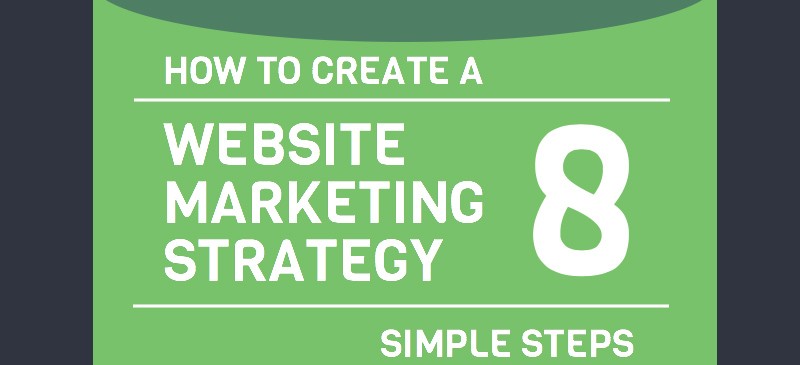How To Create A Website Marketing Strategy
Today’s consumer employs new media when researching a brand or making purchases. Forget the yellow pages, these tech-savvy troopers calmly brave the quagmire of information, malware, Kim K. selfies, and click-bait we lovingly refer to as the internet. So how can you ensure your company is a click, tap, or swipe away from a future transaction with such bold consumers? Check out these eight steps for developing a clear online strategy to put your goods and services on their radar.
1. Develop Goals
The most important part of creating a marketing plan for your website is developing goals from the outset. Do you want to boost sales or increase web traffic to your site? Having goals helps you measure the success of your marketing tactics. Set attainable goals to stay on a set path as you draft your marketing plan (and to keep from crashing on Chad’s couch).
2. Determine the Purpose of Your Website
Now that you have your goals, identify the purpose of your website in relation to your business. Are you aiming for lead conversions or do you simply want to make your business more visible on the internet? Determine your company’s purpose to further flesh out your website strategy.
3. Carve Out Your Audience
By virtue of having a website, you’ve eliminated phonebook-wielding dinosaurs as your target market. Who’s left? Whittle away at web users to define your audience. This can be as broad as deciding to market towards businesses instead of consumers or it can be more specialized by honing in on a specific audience based on age, gender, and a variety of other individual preferences.
4. Think Small Before You Think Big
Currently, locally-driven strategies constitute a massive development in the field of online marketing. Many businesses are moving away from non-location-specific strategies and instead focusing on consumers in their area. Should you develop a strategy that centers on potential or current customers in your local area or across the nation? This may depend on the service or product you offer and the scope of your reach.
5. Discover What Makes You Special
Your parents might think you’re aces, but does your audience know what makes you and your company the best? Once you’ve defined your target market, determine what sets your business apart from competitors and highlight it in your online content. Your advantages could include the quality of products you offer, how fast you provide services, or even the length of a guarantee on either.
6. Decide on Tactics
So you’ve got goals, you know who your audience is, you know you’re hot stuff — now it’s time to decide how you’re going to share your message. Paid advertisements, e-newsletters, link exchange programs, or even offline ads in print or on TV are excellent tools for creating awareness of your website and your brand. And if you want to be a Google mogul or the king of Bing, a little search engine optimization (SEO) is essential to take advantage of one of the best methods of driving targeted traffic to your site.
7. Plan Your Content
No message should ever be crafted in haste. Unless it’s an S.O.S. Beautiful visuals and interactive features can add to your web presence, but they can’t carry your brand without consistent messaging written in a distinct, carefully-developed voice. Before you begin writing content for your site, understand your brand’s tone and make an editorial plan for web content, blogs, and social media posts. You may even consider working with a professional copywriter. Remember: consumers are people (imagine that), so don’t be afraid to speak to them as such.
8. Create Your Website, Reassess Regularly
Your website blueprint is complete, now it’s time to build it with your marketing strategy in mind. But don’t think your work is done once the site is finished. Unlike undermined employees, your website will benefit from heavy micro-managing as you continually monitor it using various analytical tools. Doing so not only keeps you accountable for fresh content, but helps you discover what works for your website and which areas need improvement.
Need help taking the first steps in developing a marketing plan? Like proud parents, we’d love to be there when you do. Feel free to speak with our professionals, who can guide you in all things digital.
